What are the accommodation and meal arrangements for Mera Peak Climbing trip?
During your Mera Peak expedition, you'll stay in a tourist standard hotel in Kathmandu (breakfast only included), shared rooms in basic teahouses during the trek (with breakfast and dinner at the teahouse, lunch on the trail), and twin sharing tents during the climbing portion. The Everest region is remote, so teahouses are comfortable but not sophisticated like city accommodations. Meals during the trek include three daily courses of hygienic, organic local foods such as Nepali dal bhat, Tibetan soup and bread, and porridge. Food options are limited due to the remote location, but all meals are carefully prepared to provide proper nutrition for your adventure.
What happens during the pre-climb briefing?
The briefing session for your Mera Peak climb takes place on Day 1 in Kathmandu and for 1-2 hours. During this important meeting, you'll receive detailed information about your upcoming trek and climb, including the daily itinerary, altitude considerations, and safety protocols. This is when you'll be formally introduced to your qualified climbing guide who will lead your climbing, giving you the opportunity to ask questions about their experience on Mera Peak and discuss any specific concerns you might have.
What is the guide-to-climber ratio for different group sizes on the Mera Peak expedition, and how should I communicate any concerns I might have during the trek?
The Mera Peak climbing expedition provides comprehensive staffing support with a professional English-speaking Trekking/Climbing guide and assistant guide for every 4 members, plus 1 porter for every two trekkers. For the technical climbing portion, you'll be accompanied by licensed, professional English-speaking climbing guides allocated based on group size: 1 main guide and 1 assistant for 2-4 climbers, 1 main and 2 assistant guides for 5-8 climbers, and 1 main guide with 3 assistants for groups of 9 or more. Additionally, your team includes an experienced cook, Sherpas, and other support staff to ensure your comfort and safety throughout the journey.
Communication with your guides is essential during this challenging adventure, and you should never hesitate to share any physical or emotional concerns you experience along the way. Mountain expeditions naturally cause nervousness and anxiety, especially at higher altitudes, and the professional staff is specifically trained to help you manage these feelings. The expedition team understands that open communication about your physical condition, mental state, and any discomfort is crucial for both your enjoyment of the experience and your safety during the climb.
Will I receive a certificate for completing the trek?
Yes, after successfully completing the trek, you will be provided with an ANTE Adventure Certificate. This certificate serves as a memento of your achievement and documents your successful completion of this challenging adventure.
What Is the Group Size for Mera Peak Climbing?
Amazing Nepal Trek organizes Mera Peak Climbing with flexible group sizes to ensure personalized attention and safety:
- Standard Group Size: 2 to 10 participants per group.
- Solo Climbers: Custom arrangements available—contact us to design a private itinerary.
- Large Groups (10+ people): Specialized planning for logistics, guides, and acclimatization schedules.
Why This Range?
- Optimal Guide-to-Climber Ratio: Ensures safety and tailored support.
- Balanced Dynamics: Combines camaraderie with individual focus.
- Flexibility: We adapt itineraries for fitness levels and goals.
Simply inform us of your preferred group size, and we’ll handle the rest—from permits to porter allocations!
How Does Amazing Nepal Trek Manage Altitude Safety and Technical Challenges on Mera Peak?
Climbing Mera Peak (6,476m/21,247ft) demands expert planning for both altitude acclimatization and technical terrain. Here’s how we ensure your safety and success:
Scientifically Designed Itinerary
- Natural Acclimatization: Slow ascent profile with strategic rest days at key elevations (e.g., 1 night at 4,800m before advancing).
- "Climb High, Sleep Low" Principle: Daily hikes to higher altitudes followed by descents to sleep, optimizing oxygen adaptation.
- Paced Walking: Carefully planned daily distances (4–6 hours) to prevent exhaustion.
Expert Altitude Sickness Management
- Trained Crew: Guides certified in wilderness first aid and high-altitude emergency response.
- Early Detection: Daily pulse oximeter checks and health monitoring.
Immediate Protocols:
Technical Safety Measures
- Fixed Ropes & Ice Training: Practice sessions on glacier travel and crampon use before summit day.
- 1:4 Guide-to-Climber Ratio on steep sections for personalized attention.
- Weather-Adaptive Plans: Contingencies for sudden snowstorms or whiteouts.
"Our priority is getting you to the summit safely—not just quickly."
Why is Travel Insurance Mandatory for Mera Peak Climbing?
At Amazing Nepal Trek, we require comprehensive travel insurance for your safety on this high-altitude adventure. Here's what you need to know:
Coverage Requirements
Your policy MUST include:
- High-altitude coverage up to 6,500m (21,325ft) - standard policies often exclude this!
- Emergency helicopter evacuation from remote areas ($100,000+ minimum coverage)
- Medical expenses including hospitalization in Nepal ($50,000+ recommended)
- Trip cancellation/interruption protection
- Lost/stolen baggage coverage
- Repatriation benefits
Why This Matters for Mera Peak
- 1 in 5 climbers require medical attention or evacuation
- Helicopter rescue costs 3,000−7,000 without insurance
- Many hospitals require upfront payment without coverage
- Weather delays may force itinerary changes
Pro Tips
- Purchase insurance within 14 days of booking for maximum cancellation benefits
- Carry both digital and printed copies of your policy
- Share insurance details with your guide during the pre-trek briefing
- Verify that "mountaineering" is specifically covered (not just "trekking")
Note: We can recommend reputable insurers if needed - just ask during booking!
Are Permit Fees Included in the Mera Peak Climbing Package?
Yes, all required government permits and fees are included in your Mera Peak Climbing package with Amazing Nepal Trek. We handle all necessary documentation to ensure full compliance with regulations.
Mandatory Permits Covered:
- Makalu Barun National Park Entry Permit
- Mera Peak Climbing Permit (seasonal rates applied)
- Khumbu Pasang Lhamu Rural Municipality Permit
- TIMS Card (Trekkers’ Information Management System)
- Conservation and Area Development Fees
Key Benefits:
- Transparent Pricing: No hidden costs for mandatory permits.
- Seamless Process: Our team manages all paperwork before your arrival.
- Regulatory Compliance: Valid permits for all restricted areas.
- Local Support: Fees contribute to trail maintenance and community development.
Note: Personal expenses (beverages, tips, additional hotel nights) are not included. All climbing-related permits and fees are covered in your package cost.
What Happens If My Kathmandu-Lukla Flight Is Delayed or Canceled?
Flights between Kathmandu and Lukla are operated by Twin Otter and Dornier aircraft. While generally reliable, these flights are subject to weather conditions and technical factors. Amazing Nepal Trek has comprehensive contingency plans to minimize disruption to your itinerary.
Flight Contingency Protocol:
- Weather-Related Cancellations:
- Fixed-wing aircraft require 5,000m visibility (per Civil Aviation rules)
- Helicopters can operate with 1,500m visibility
- Our team monitors weather forecasts continuously
Helicopter Charter Option:
- Available for urgent transfers when fixed-wing flights are canceled
- Cost ranges from 500(shared) to 3,500 (private) depending on group size
Payment methods accepted at our Kathmandu office:
Insurance-claimable receipt provided
Recommended Travel Planning:
- Arrive in Kathmandu at least 1 day before trek departure
- Buffer days after trek completion (2-3 days recommended)
- Ensure travel insurance covers:
Flight cancellations
- Alternate transportation costs
- Additional accommodation expenses
Key Considerations:
- Morning flights have higher success rates (book early)
- During peak seasons (March-May, September-November), flights may operate from Ramechhap Airport (4-5 hour drive from Kathmandu)
- Our guides provide real-time updates and coordinate alternative arrangements
Note: While we make every effort to maintain schedules, mountain weather remains unpredictable. Your flexibility helps ensure a successful trek conclusion.
Do I Need Mountaineering Experience to Climb Mera Peak?
Mera Peak (6,476m/21,247ft) is considered one of the most accessible Himalayan climbing peaks for beginners, requiring no prior technical mountaineering experience. While the approach trek to Mera Peak Base Camp is more challenging than the route to Island Peak, the actual summit climb involves fewer technical difficulties. The climb primarily requires good physical fitness and the ability to walk 5-7 hours daily over varied terrain for consecutive days.
During the ascent, you will use basic climbing equipment including harnesses, ice axes, and crampons on 30-35 degree snow slopes, with fixed ropes provided for safety on steeper sections. Compared to Island Peak, Mera Peak features less technical glacier travel and more straightforward summit terrain. We recommend this climb for enthusiastic trekkers seeking their first Himalayan summit experience or those looking to progress beyond standard trekking.
To ensure your safety and success, our program includes 1-2 days of essential training at base camp covering proper equipment use, rope techniques, and glacier travel basics. Our certified guides maintain a 1:4 ratio during the summit push for personalized attention. While technical skills can be learned during the expedition, we strongly advise cardiovascular training and weighted pack hikes for 3+ months prior, along with consultation about altitude medication.
For those without prior high-altitude experience, we recommend considering an Everest Base Camp trek first to assess your adaptation to elevation. Our team will evaluate your readiness during base camp training and make appropriate recommendations to maximize your summit chances while prioritizing safety. We provide detailed pre-departure guidelines covering physical preparation, gear selection, and altitude management to help you prepare effectively.
How to Choose a Reliable Peak Climbing Operator in Nepal?
Selecting the right operator for your Himalayan climb requires careful evaluation beyond just comparing prices. Here are the essential factors to consider:
Key Selection Criteria
- Itinerary Quality
- Verify sufficient acclimatization days (minimum 2-3 days above 4,000m)
- Check for logical altitude gain progression (300-500m per day above 3,500m)
- Look for contingency days for weather delays
Safety Standards
- Government-registered company with valid trekking/climbing licenses
- Experienced climbing leaders (minimum 5 years guiding peaks above 6,000m)
- Certified staff in wilderness first aid and high-altitude rescue
- Proper equipment maintenance logs and replacement schedules
Transparent Pricing
- Clear breakdown of inclusions/exclusions
- Valid operator insurance covering staff and clients
- No hidden costs for permits or emergency services
Company Reputation
- Minimum 5 years of consistent operation
- Verified client testimonials with summit success records
- Membership in recognized tourism associations (TAAN, NMA)
- Ethical Operations
- Fair wages and insurance for local staff
- Environmental conservation practices
- Cultural sensitivity training for guides
Red Flags to Avoid
- Prices significantly below market average
- Vague or incomplete itineraries
- Lack of proper licensing documentation
- Unverified or anonymous online reviews
- Pressure for immediate deposits
Our Commitment at Amazing Nepal Trek:
- 12+ years operating Mera Peak expeditions
- 98% summit success rate (2023 season)
- UIAGM-certified lead guides
- Full equipment audits before each climb
- Transparent pricing with no hidden fees
How to book Mera Peak Climbing with Amazing Nepal Trek & Expedition?
Step 1: Initial Inquiry
- Contact Amazing Nepal Trek via website, email, or phone
- Specify your preferred trek dates and group size
- Ask any preliminary questions about the trek
- Receive detailed information about the Mera Peak Climbing
Step 2: Booking Confirmation
- Complete the Amazing Nepal Trek booking form
- Pay the deposit (20% of total trek cost) to secure your reservation
- Receive booking confirmation and receipt
- Get pre-trip information package with preparation guidelines
Step 3: Final Preparations
- Purchase comprehensive travel insurance with high-altitude coverage
- Book international flights to Kathmandu
- Complete recommended medical check-ups
- Gather required trekking gear
Step 4: Arrival in Kathmandu
- Inform Amazing Nepal Trek of your arrival details
- Meet your representative at Tribhuvan International Airport
- Transfer to your hotel in Kathmandu
- Attend Climb briefing with your guide
- Receive your duffel bag and check your equipment
Amazing Nepal Trek offers free date changes in case of flight cancellations due to weather, personal emergencies, or unexpected events. A detailed terms and conditions document will be provided during the booking process.
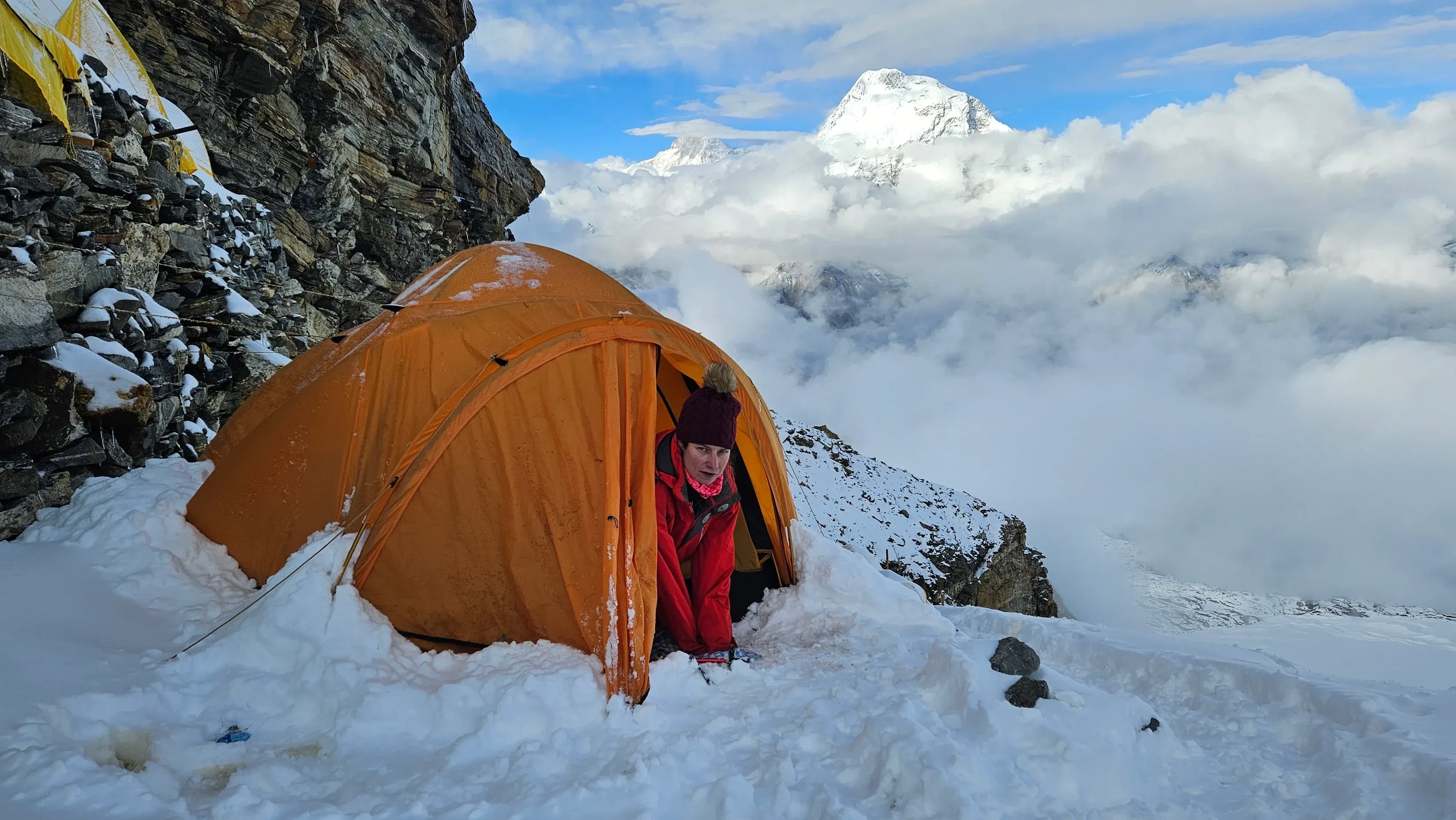
 54 Reviews on Google
|
54 Reviews on Google
|  30 Reviews on Facebook
30 Reviews on Facebook
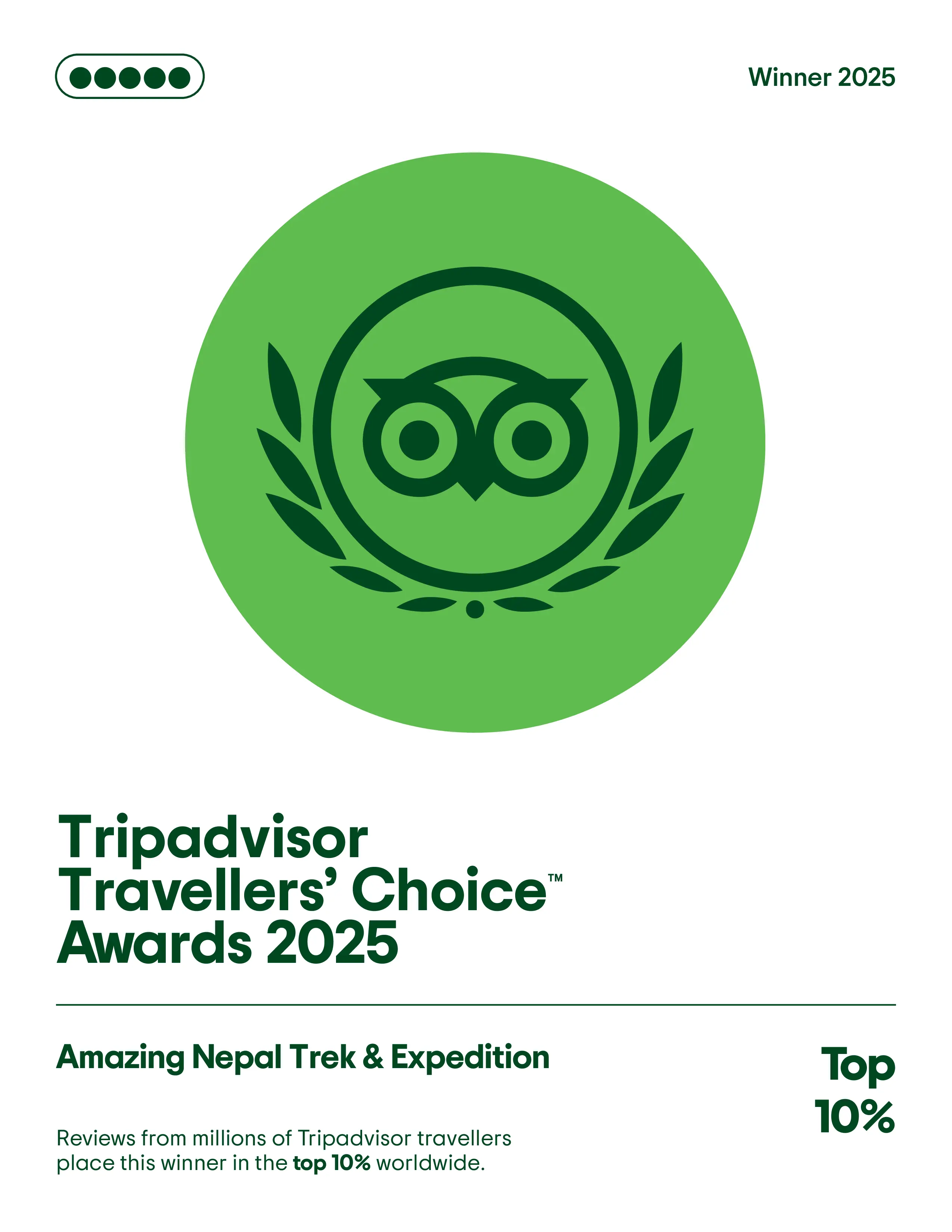
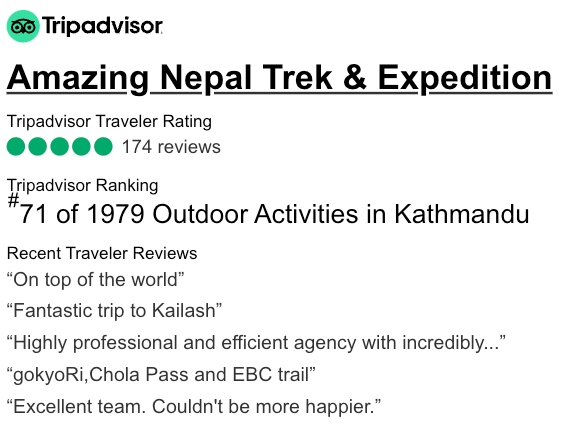


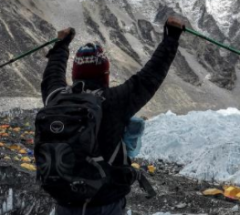
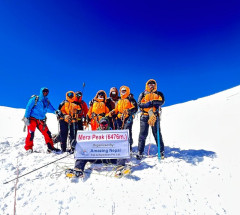
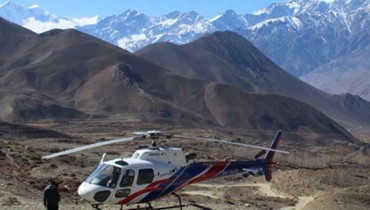
 (1) (1).jpg)
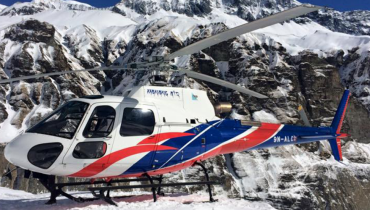
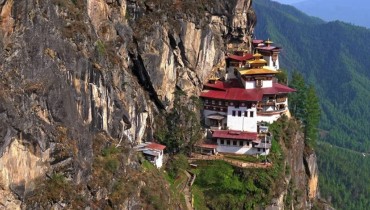
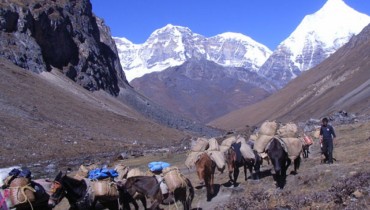
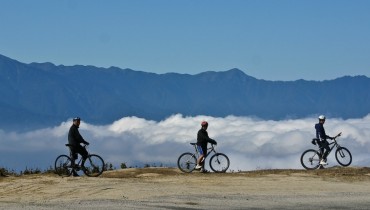
 WhatsApp Us
WhatsApp Us




